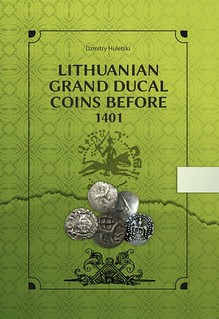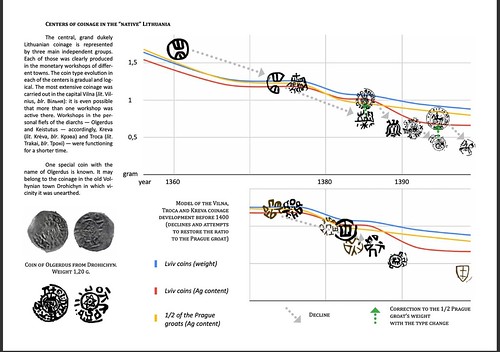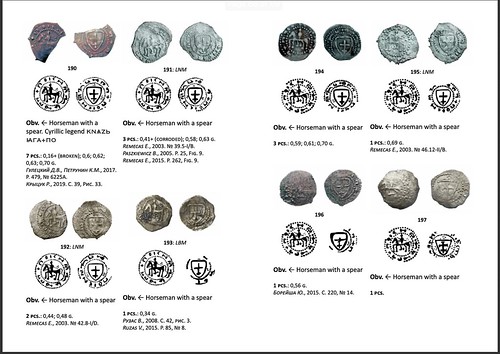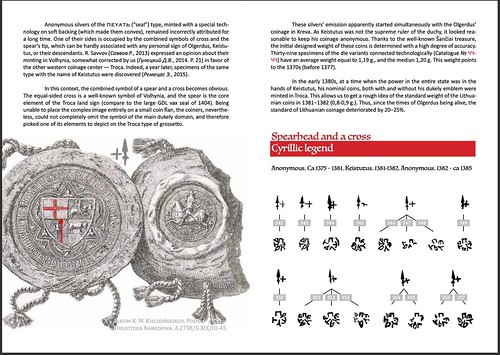
PREV ARTICLE
NEXT ARTICLE
FULL ISSUE
PREV FULL ISSUE
V25 2022 INDEX E-SYLUM ARCHIVE NEW BOOK: LITHUANIAN GRAND DUCAL COINSDzmitry Huletski has published a new book on the medieval hammered Lithuanian Grand Ducal coins before 1401. -Editor
The word Lithuania was mentioned for the first time in the annals of Quedlinburg (year 1009) that the story of Saint Bruno of Querfurt who was beheaded by the pagans The territory of the state doubled due to the lands that were previously part of Kievan Rus'. Immediately before the establishment of Lithuanian power, many of these lands were under the rule of dukes from the Rurikid dynasty, some of whom were in varying degrees of dependence on the Golden Horde. Keistutus (lit. Kestutis, blr. Кейстут), who had power in the western wing of the state, is considered a diarch in relation to Olgerdus. The brothers jointly deprived of power in the state their brother Iaunutus back in 1345. After the death of Olgerdus, Keistutus accepted the supremacy of his son Iagal (lit. Jogaila, blr. Ягайла), but the disagreements of the dukes finally resulted in the short-term reign of Keistutus over the entire state (1381–1382). Ultimately, Iagal (Grand Duke of Lithuania in 1377–1434, later Wladyslaw II Jagiello, King of Poland in 1386–1434) physically eliminated Keistutus and gained supreme power over the country. Soon he was invited to the Polish throne, which marked the geopolitical turn of the Lithuanian state from East to West. The Grand Duchy of Lithuania was considered the last pagan state in Europe. In 1385 Iagal converted his country to Catholicism. The Grand Duchy of Lithuania, incorporating Lithuania proper, Belarus, most of Ukraine, parts of today's Russia and Poland, became one of the most influential powers in Eastern Europe (14th–16th century). In a way, the Grand Duchy of Lithuania was a precursor of the European Union with the latter's adherence to the unity in diversity concept..
Material type: hardcover.
For more information, see:
To order, see:
Wayne Homren, Editor The Numismatic Bibliomania Society is a non-profit organization promoting numismatic literature. See our web site at coinbooks.org. To submit items for publication in The E-Sylum, write to the Editor at this address: whomren@gmail.com To subscribe go to: https://my.binhost.com/lists/listinfo/esylum All Rights Reserved. NBS Home Page Contact the NBS webmaster 
|




